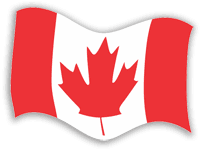
#15 The CCF and NDP
by Robert Bothwell
| Canada’s social-democratic left has
been embodied in two successive political formations, the
Co-operative Commonwealth Federation (CCF), from 1932 to 1961,
and the New Democratic Party (NDP) from 1961 to the present day. Canada, like other western, industrial countries, produced a variety of radical and socialist political movements, usually associated with or even embodied in trade unions at the turn of the 20th century. There was also a tradition of social action derived from Canada’s Protestant churches, and these two streams combined during the First World War into political action protesting the war and unequal social and economic conditions. The left divided in 1921 with the formation of the Canadian Communist Party, whose policy and leadership was ultimately determined in Moscow. Leftists who preferred democratic politics refused to join the Communists, and in 1932, at a conference in Calgary, formed a new political grouping, the clumsily-named Co-operative Commonwealth Federation, which was always known by its initials as the CCF. At another conference in Regina in 1933 the CCF produced a manifesto, or platform, which called for the state to take over virtually all industry and the financial system, inside a planned economy. Although the Great Depression stimulated the foundation of the CCF, most Canadians preferred the safety of the mainstream parties, the Liberals and Conservatives, and in the federal elections of 1935 and 1940 the CCF secured less than 10 percent of the vote and no more than nine seats in Parliament. Curiously it was the Second World War, which produced a planned economy, full employment, and high agricultural prices that gave the CCF its chance. Many Canadians, it appeared, liked the economic security of wartime and wanted to see it guaranteed for peace. The CCF seemed to offer that, and in 1943 and 1944 it broke through, becoming the official opposition in Ontario and the government in Saskatchewan under an inspiring leader, Tommy Douglas. Success for the CCF meant displacing the Liberals. Sensing the danger, Prime Minister William Lyon Mackenzie King moved his Liberal party to the left. Nationally, the CCF under leader M.J. Coldwell was held to a handful of seats. Prosperity did the rest — it seemed to Canadians there was no need for the CCF’s drastic economic prescriptions. At a conference in Winnipeg in 1956 the CCF rejected socialism, but that was not enough. In the 1958 federal election the CCF did worse than it had at any election since 1935.The CCF did maintain power in Saskatchewan where in 1960 it enacted a comprehensive, compulsory public health insurance scheme. Though the CCF lost power in Saskatchewan in 1964 after a doctors’ strike, health insurance remained. Hoping to expand its base, the CCF sponsored a New Party which in 1961 at an Ottawa convention became the New Democratic Party (NDP). The NDP by this point no longer called for vast schemes of nationalization, but instead for expanded social security. But as in the 1940s, the NDP under Tommy Douglas were pre-empted by the Liberals who passed a national medical insurance scheme (Medicare) and enhanced public pensions. Through the 1960s and 1970s the NDP remained politically marginal on the national level, though they did enjoy some success provincially in British Columbia, Saskatchewan, Manitoba and Ontario. To general surprise, in Ontario they eventually succeeded in securing a majority and forming a government in 1990. But circumstances were not kind to the NDP provincial governments in those years: they faced a sharp and prolonged recession, and the policies they adopted were in fact no different from those of Conservative or Liberal governments in the other provinces. The NDP’s main rival remained the Liberals. With the Liberals at a low ebb in the mid-1980s, and NDP governments in power in populous Ontario and British Columbia, the NDP hoped to destroy the Liberals and displace them as the alternative to the governing Progressive Conservatives, only to be frustrated in the 1988 election. Although that year marked the high point of the NDP’s fortunes (43 seats and 20 percent of the vote), the party led by Ed Broadbent remained significantly behind the Liberals. Moreover, it was the Liberals who in the next election defeated the Conservatives and reduced the NDP to 7 percent of the vote and nine seats in Parliament. Part of the credit for the NDP defeat belonged to the by then extremely unpopular NDP governments in British Columbia and Ontario. The party in those two provinces duly followed their federal counterpart into defeat. Though the national NDP later recovered, it was never enough. Even the Liberal defeats in the 2006 and 2008 elections did not produce the hoped-for political breakthrough. The NDP, like the CCF, thus remained a party in waiting — an alternative to an alternative, so to speak. It was not the most promising position from which to launch a credible campaign to become the government of Canada. Next Instalment: Bloc Québécois The Canadian Experience is a 52-week history series designed to tell the story of our country to all Canadians. Sponsored by Multimedia Nova Corporation and Diversity Media Services/Lingua Ads partners, the series features articles by our country’s foremost historians on a wide range of topics. Past articles and author bios are available at http://www.cdnexperience.ca. The Canadian Experience is copyright © 2010-2011 Multimedia Nova Corporation. |
List of published "Canadian Experience" articles |
The Canadian Experience communicates to
us about the many facets of Canada, the people, the Charter, brings us
reality and creates understanding.
Copyright ©2010 Echoworld Communications. All rights
reserved

